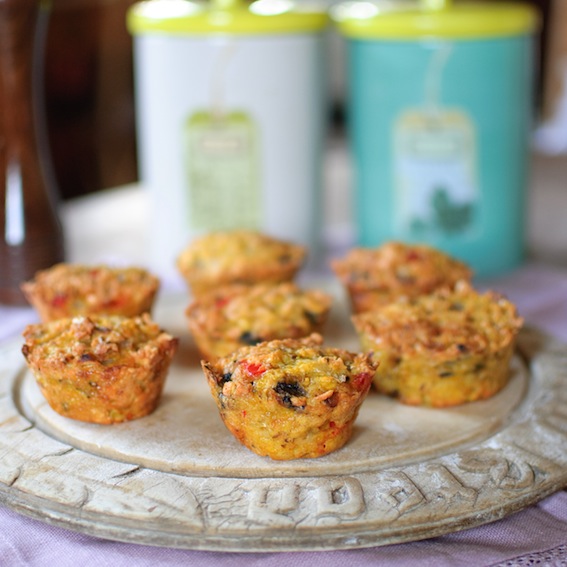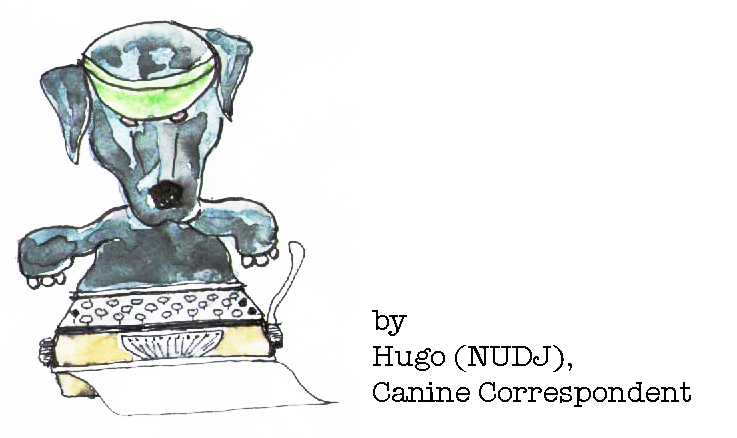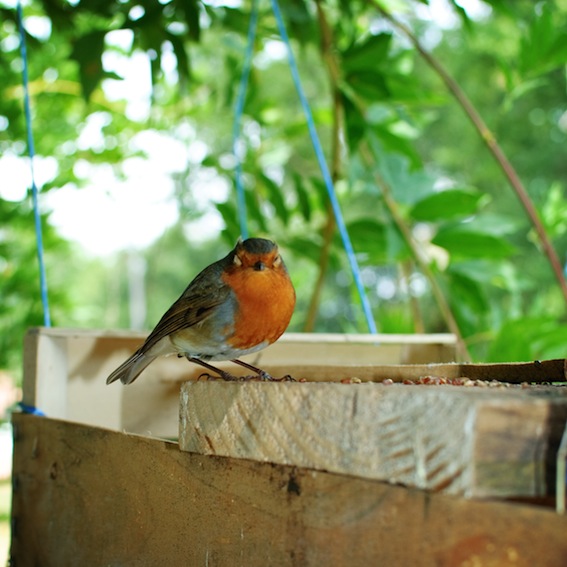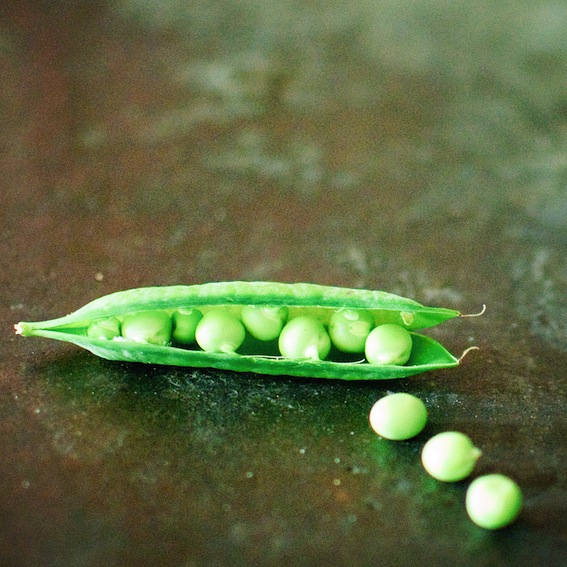-
Savoury chickpea muffins and cold, white stuff

Everything was all white this morning (my punishment for making silly puns is that I now have the Bill Withers song ‘Lovely Day’ stuck on repeat in my head: ‘Then I look at you, And the world’s all white with me, Just one look at you, And I know it’s gonna be a lovely day…’).
Snow in this area is rare, which means that when it does happen, everything grinds to a halt; Hugo being a case in point. He dipped one paw into the cold, white stuff, looked around quizzically, sighed heavily and turned back into the house. Java and Léo, on the other hand, were absolutely delighted. Snow is a precious commodity. So much so that I now have a freezer full of ready-to-throw snowballs, which is, I assume, the ammunition equivalent of microwave meals. I wouldn’t be at all surprised if he didn’t try to take them to school in a cooler box.
Like Hugo, the migratory cranes in the cornfield to the back of the house looked very cheesed-off. I think they were probably lamenting their choice of winter destination: ‘That’s the last time we’re coming here – what a rip-off! We flew 5,000 kilometres for a bit of sun and this is what we end up with. We could have stayed at home if we’d wanted snow!’. Maybe Hugo will migrate south next winter in case the nasty, white stuff strikes again.


Chickpeas (or garbanzos) have a very low-GI and are a rich source of fibre, making them ideal for digestive disorders and weight loss. They are also rich in protein (in the form of amino acids), minerals (especially manganese, selenium and iron), vitamin K, folates and antioxidants (saponins).
Ingredients (makes 12)
200g spelt flour
Sea salt and freshly-ground black pepper
1 teaspoon cumin seeds
1 teaspoon chilli powder
½ teaspoon bicarbonate of soda
400g chickpeas, pre-cooked and mashed
2 eggs, beaten
100ml olive oil
75g cheddar cheese, grated (any hard cheese will do)
1 onion, chopped
½ red pepper, chopped
Preheat the oven to 180°C. Combine the flour, seasoning, spices and bicarbonate of soda in a large bowl. In a second bowl, combine the chickpeas, eggs and oil, mixing well. Add the dry ingredients to the wet ingredients, folding together well. Lastly incorporate the grated cheese, onion and red pepper. Transfer the mixture to muffin tins or moulds (I use silicon moulds) and bake for 20-25 minutes or until a fork comes out clean. Delicious served hot or cold. -
Anzac biscuits and manic Monday
This morning I was to take Léo to school, Java to the vet to have her stitches removed, and my husband to the osteopath in an attempt to convince him that his ribs are fractured and that he should temporarily cut out all activities involving long ladders and roofs. We arrived at school to be told that their roof had collapsed in the night and that there would be no lessons for the foreseeable. This suited me quite well as it happens, because it meant that Léo could stay in the back seat to prevent Java from strangling herself with her lead; emergency stops on the hard shoulder to unravel dogs are always a bit of a nuisance.
While the journey was event-free, it took no fewer than four of us to hold Java down while the vet tried to take out her stitches. Fifteen kilos of hyperactive, adrenaline-fuelled, unadulterated puppy terror produce a force to be reckoned with, believe me. Obviously Luc couldn’t help, what with his dodgy ribs, but it was very useful to have him there barking orders at us all (including the vet) to ‘just hold her down for God’s sake’. The visit to the osteopath was less traumatic (Luc didn’t wriggle on the table), but she did call me in to insist upon the importance of his staying still and on terra firma for the next six weeks. I guess someone else will have to fix the school roof, although presumably he’ll be available for ‘advice’!
These biscuits are divine and really rather healthy. Oats have a low GI, are extremely high in fibre and contain a multitude of vitamins and minerals. They are also rich in beta glucans which increase the immune system’s ability to fight off bacteria, fungi, viruses and parasites. Although beta glucans enhance the immune system, they don’t make it overactive and are therefore suitable for people with autoimmune diseases.
This recipe is adapted from Amber Rose’s wonderful book ‘Love. Bake. Nourish’.
Ingredients (makes 16-20)
125g spelt flour
100g desiccated coconut
40g raisins
100g rolled oats
Tablespoon chia seeds (optional)
Pinch of sea salt
75g coconut oil
50g butter
80g honey
½ teaspoon bicarbonate of soda
Preheat the oven to 180°C. Prepare and grease two baking trays. Combine the flour, coconut, raisins, oats, chia seeds and salt in a large mixing bowl. Gently melt the coconut oil, butter and honey in a small saucepan and stir until smooth. Dissolve the bicarbonate of soda in two tablespoons of boiling water. Add the wet ingredients to the dry ingredients and combine well.
Roll walnut-sized pieces of dough into balls and place on the baking trays, leaving space between each ball. Flatten them slightly and bake for 15 minutes until golden brown. Allow to cool before serving. -
There are always flowers for those who want to see them (Henri Matisse)

Over the past 50 years, wheat has been cross-bred to make it more resistant, shorter and faster growing. Today’s wheat is extremely inflammatory and contains substances that are difficult to digest. It is believed that the gluten found in this modern-day wheat is responsible for the rising occurrence of celiac disease, as well as benign gluten and wheat intolerance.
In addition to this, wheat’s glycemic index is very high as it contains amylopectin A, which is more easily converted to blood sugar than any other carbohydrate, including table sugar. The protein in wheat is transformed into exorphins which bind themselves to the opioid receptors in the brain, creating cravings and serious addiction. And to add insult to injury, recent research suggests that the consumption of modern wheat might trigger autoimmune diseases such as type 1 diabetes, rheumatoid arthritis, and multiple sclerosis.
So if you make only one change towards improving your diet this year, how about replacing wheat flour with some of the many alternatives? Not only will you be adding flavour and goodness to your plate, you’ll be improving your overall health as well.- Spelt flour. This is a big favourite of mine. Although it contains gluten it is in a form far more easily digested than the gluten in wheat. It contains more protein (in the form of amino acids) than wheat and is a rich source of B vitamins, fibre and minerals. Makes a wonderful, slightly nutty-tasting substitute for wheat flour in baking.
- Rye flour. Rye flour also contains gluten, but again in a more digestible format. It is an excellent source of fibre, so much so that it is actually said to aid weight loss. It also contains plenty of vitamin E, calcium, iron and other trace minerals. Also well-adapted to baking, although I usually combine it with another flour as it can be a bit dry.
- Buckwheat flour (gf). Despite its name, it’s not a type of wheat at all, but a plant closely related to rhubarb. Buckwheat is rich in protein, B vitamins and minerals (including iron). It makes wonderful pancakes and crepes and may be combined with spelt or rye flour for baking.
- Chestnut flour (gf). Chestnut flour provides protein in the form of amino acids, fibre as well as vitamin E, B complex vitamins, potassium, phosphorus and magnesium.
- Chickpea flour (gf). Grain-free, chickpea flour is high in protein (again in the form of amino acids), folate and B vitamins, iron, magnesium and phosphorus. Makes superb fritters, savoury pancakes and flatbreads.
- Millet flour (gf). Purportedly one of the least allergenic of all flours, millet flour is gluten free and very easily digestible due to its high alkalinity. An excellent source of iron, magnesium, calcium, phosphorus, manganese, zinc and B vitamins.
- Quinoa flour (gf). Quinoa flour contains about 17% protein, which makes it a richer source than any other grain flour. It also contains iron, calcium, zinc, potassium, magnesium, phosphorus and copper.
- Kamut flour. A highly nutritious flour, containing a form of gluten easier to digest than wheat. Again high in protein, it also contains potassium, B vitamins, zinc, magnesium and iron.
- Teff flour (gf). Teff has by far the highest proportion of calcium compared with other flours. It also contains amino acids, B vitamins, vitamin K and minerals. In its native Ethiopia, it is primarily used to make traditional flatbread.
- Coconut flour (gf). Like chickpea flour, coconut flour is grain-free. It has the highest percentage of fibre (58%) of any flour. It also contains vitamin C, iron and calcium. It is delicious used in baking and may also be used for pancakes or bread.
-
Cream of mushroom and spinach soup and Hugo’s take on sterilisation


Java spent all day yesterday at the vet. Although I had a nice peaceful day, I did miss her, which is a bit like missing a sore paw really. I heard Bossy tell someone that she was being sterilised. I know that she’s inclined to be dirty (Java, not Bossy), because she’s often covered in mud (and sometimes worse), but I didn’t realise that it was that bad. And anyway, once she’s been sterilised, surely she’ll just jump into the river and roll in the mud and be dirty all over again. When she came back last night she was in a very sorry state; I think that the sterilising machine must have slipped or something because she had a big bandage on her tummy. Also, she cried all evening and couldn’t walk properly and had to be carried to bed. I’m not allowed to practise my judo on her or chew her ears for two whole weeks, which makes me wonder what the point of her is. I hope they don’t take me to the vet to be dry-cleaned because I don’t want to end up like that. She seems to be better today, but I’m not: I’m quite exhausted because I had to comfort her all night while everyone else was asleep *exploited doggy sigh*.
Thank you Hugo. I’m sorry that you’re feeling exploited, but it was very kind of you to take care of Java. This soup is packed full of nourishment. The mushrooms provide vitamins D and B complex, as well as minerals such as selenium, magnesium, phosphorus, potassium and copper. The spinach contains high levels of iron, folic acid and calcium as well as vitamins A, C and K. The butter and cream aid absorption of the fat-soluble vitamins (A, D, E and K).
Ingredients (serves 6)
10g butter
1 tablespoon olive oil
1 large onion, finely sliced
1 clove garlic, crushed
125g mushrooms, cleaned and sliced (I used button mushrooms but you could use any sort)
225g baby spinach leaves
1 litre organic vegetable or chicken stock
Sea salt and freshly ground black pepper
1 teaspoon paprika
100ml pouring cream
Gently heat the oil and butter in a large pan, add the onion and garlic and cook until softened. Add the mushrooms and cook for five minutes before adding the spinach, stock and seasoning. Simmer for about 15 minutes and purée until smooth. Add the cream, stirring well and serve. -
The health benefits of wine

When I talk about the health benefits of wine drinking, I’m referring to very moderate consumption (five to seven glasses a week), accompanied by food. I’m afraid that necking the whole bottle on a empty stomach, while it might be fun at the time, does not count as healthy consumption!
There have been numerous studies conducted on the health benefits of wine, especially red wine. Without exception, the findings all suggest that it promotes a longer life, aids digestion, improves mental health, acts as an anti-inflammatory, protects the heart and even protects against certain cancers. Finally, the benefits gained from the pleasure of drinking a glass of good wine gives should not be underrated.
Hippocrates, the father of western medicine, was a big wine advocate, claiming it was something of a panacea. He used it for disinfecting wounds, diluting medication to increase palatability, alleviating pain during childbirth, symptoms of diarrhoea and even lethargy.
The anti-aging properties of wine have been apparent for over a thousand years. Monasteries were convinced that their monks’ long lifespans was due at least partly to their moderate, regular consumption of wine. Their conviction was later confirmed by The Copenhagen Heart Study carried out in 1994/95.
Wine provides valuable vitamins, minerals and phytonutrients, but probably its main health benefits are due to its high resveratrol content. Red wine contains more resveratrol than white because it is fermented with the skins (white wine is not). Certain plants produce resveratrol to fight off bacteria and fungi and shield from ultraviolet irradiation.
A recent Spanish study found that wine, particularly red wine, reduces the risk of depression. It showed that people drinking between two and seven glasses of wine per week were less likely to be diagnosed with depression, even after factoring in lifestyle. Another study carried out at the University of Leicester reported that regular, moderate red wine consumption could reduce the rate of bowel tumours by about 50%.
It is accepted that alcohol consumption generally increases the risk of breast cancer. However, a study conducted at Cedars-Sinai Medical Centre in Los Angeles found that wine intake has the opposite effect. The chemicals in the skins and seeds of red grapes reduce oestrogen levels while raising testosterone which results in a lower risk of developing breast cancer.
Another study found that moderate red wine intake can reduce the risk of developing dementia. The study which was conducted in 19 countries showed a significantly lower dementia risk amongst regular wine drinkers. It would appear that resveratrol reduces the stickiness of blood platelets, which helps keep the blood vessels open and flexible, which in turn helps maintain a good blood supply to the brain. The study concluded that moderate red wine drinkers had a 23% lower risk of developing dementia.
Red wine shields against severe sunburn, by virtue of its flavonoid content. It also protects the eyesight by controlling the overgrowth of blood vessels in the eye, a problem in both diabetic retinopathy and age-related macular degeneration. Drinking wine also boosts levels of omega-3 fatty acids in the body and it would appear that resveratrol improves sensitivity to insulin. Insulin resistance is the most important critical factor contributing to type 2 diabetes risk.
Perhaps most surprisingly, modest wine consumption is good for liver disease. A study showed that it reduced the risk of non-alcoholic fatty liver disease by half compared to people who never drank wine.
If you’re interested in finding out more about this ‘superdrink’, there is a very complete and interesting book, written by Frenchman, Michel Montignac called The Miracle of Wine.
Santé! -
Homemade harissa and picnic mortification

I wouldn’t claim to be a perfect mother by any stretch of the imagination. The ability to discipline, for example, appears to be something that has completely passed me by; lack of motivation is almost certainly the cause because, unfortunately, mischief amuses me no end. I’m apparently known amongst Léo’s friends as a bit of a pushover and I have, no doubt, the same reputation amongst the animals. A healthy diet for my son though is something that I do usually manage quite well. I had to provide a picnic the other day as he was attending an all-day riding course. Picnics for Léo are an absolute minefield because he doesn’t do, amongst other things, warm cheese, soggy bread, raw vegetables, floppy salad, softened chocolate etc. In other words, he doesn’t really do picnics. He does, however, have a bit of a thing for ketchup so, in an attempt to dilute the menace of the healthier components of his sandwich, I applied liberally. More fool me. When I went to fetch him, he shouted (loudly) in front of over a dozen other people: ‘Maman, you totally ruined my sandwiches by drowning them in ketchup – they were inedible!’. I think in future he’ll either be getting a generous dollop of this eye-wateringly spicy harissa instead, or learning to make his own sandwiches!
Chili peppers contain capsaicin, which gives them their strong spicy pungent flavour. Capsaicin has antibacterial, anticarcinogenic, analgesic and antidiabetic properties. Fresh chilli peppers are also a rich source of vitamin C and contain other antioxidants such as vitamin A, lutein and beta carotene. They also provide reasonable quantities of minerals such as potassium, manganese, iron, and magnesium.
Ingredients
15 chili peppers, rinsed, topped and tailed
1 teaspoon caraway seeds
1 teaspoon coriander seeds
1 teaspoon cumin seeds
1 teaspoon dried mint leaves
3 tablespoons olive oil plus extra for jar
1 teaspoon sea salt
5 cloves garlic
Juice of 1 lemon
Put the chilies into a bowl, cover with boiling water and leave to soak until softened (about 20 minutes). Heat the caraway, coriander, and cumin seeds in a frying pan over medium heat. Toast the spices for about four minutes until very fragrant. Drain the chilies and transfer to the bowl of a food processor with the spices, olive oil, salt, garlic and lemon juice. Purée, stopping occasionally to scrape down the sides of the bowl, until the paste is very smooth. Transfer to a sterilised glass jar and fill with oil until ingredients are submerged. Refrigerate, topping off with a little more oil after each use. -
Celeriac gratin and Hugo the sage


I’m thinking about leaving home. Bossy would obviously try to stop me because I’m quite a catch as dogs go. It’s not that I don’t like it here; the food’s not bad most of the time, the scenery is pretty enough, I’m more or less allowed to do whatever I like (except kill hens, which is very frustrating for me – to the point that I may even be psychologically damaged). I’m just getting a bit fed up of all the baby animals that keep popping up. There have been rabbits, kittens, hedgehogs, birds, foals and now a damned puppy of all things! I suppose I must have been a puppy once, but I’m sure that I would have been an extremely well-behaved one. It stands to reason. Secretly I have to admit that Java’s really rather sweet, but her shenanigans are beyond me. For example, why would you plunge into a ditch that you know you have absolutely no hope of getting out of on your own? It’s just silly of her to try to copy me because I have a magnificently muscular male physique and she is, frankly, just a silly slip of a girl. Maybe I’m going to have to stay after all because someone’s going to have to show her the ropes and I can just imagine the chaos if I leave it to Bossy. One thing is certain: Java’s not going to be helping me to write my column anytime soon because she doesn’t even know how to read and write yet!

Thank you Hugo! I very much hope you decide to stay.
Just as I make use of a large variety of grains, I also try to vary the root vegetables we eat as much as possible. We eat potatoes, for example, quite rarely as there are so many other things to chose from – sweet potatoes, swedes, turnips, parsnips and one of my favourites: celeriac.
Celeriac is very rich in antioxidants and a good source of vitamin K. It also provides essential minerals such as phosphorus, iron, calcium, copper and manganese, as well as B-complex vitamins.
This recipe is adapted from Jamie Oliver.
Ingredients (serves 4)
1 large celeriac, peeled and cut into 1cm slices
2 large potatoes, peeled and cut into 1cm slices
2 cloves of garlic, crushed
1 chilli pepper, finely sliced
sea salt and freshly ground black pepper
1 teaspoon paprika
400ml cream
200ml vegetable stock
4 anchovy filets
75g hard cheese (I used Comté), grated
Preheat the oven to 190°C. Place the celeriac, potatoes, garlic and chilli pepper in a large ovenproof dish and season. Add the cream, stock, anchovies and most of the cheese. Mix everything well and then sprinkle the remaining cheese on top. Bake in the preheated oven for 50 minutes until golden brown and bubbling on top. -
Chocolate beetroot cake and fast food for young birds

We appear to have earned ourselves a bit of a reputation as the go-to hangout for young birds. Word of mouth, or tweet of beak as the case may be, is a very powerful thing. We had another winged visitor this morning, who we discovered perched next to the little turtle dove in the kitchen. They looked as if they were sitting in a restaurant waiting for lunch to be served. Had there been miniature knives and forks to hand, I think they’d have been banging them on the table impatiently. Not wanting to disappoint, I whipped up some quinoa; I’ve been slightly concerned that little TD might not be getting a broad enough range of nutrients on her rather obsessive mono-diet of couscous. Having been quite categorical about not cooking separate dishes for month-old birds, my stance has evidently flown out of the window. I’m absolutely intransigent when it comes to baby animals! I’m now racking my brains as to what I can prepare for them for dinner as, having checked on the Turtle Dove Forum, apparently chocolate cake is a no-no.

Beetroot’s nutritional benefits come from its potent combination of vitamins, minerals, amino acids (notably glutamine), fibre and unique anti-oxidants. Beets are high in vitamin C, B-complex vitamins, fibre and essential minerals such as potassium (essential for healthy nerve and muscle function) and manganese (which is good for your bones, liver, kidneys, and pancreas). Studies have shown the beneficial effect of beetroot juice on blood pressure and suggest that nitrate-rich foods such as beetroot may help in heart attack survival. The powerful phytonutrients that give beets their deep crimson colour may even protect from cancer.
Ingredients
100g spelt flour
75g rye flour
1 teaspoon baking powder
1 teaspoon bicarbonate of soda
75g unsweetened cocoa powder
80g cane sugar
100g dark chocolate (min. 70% cocoa solids), melted
3 eggs, beaten
250g beetroot, cooked and grated
200ml olive oil
100ml plain yoghurt
Grease a medium-sized cake tin and set aside. Preheat the oven to 150°C. Sift the flours, raising agents and cocoa powder together in a bowl and set aside. Add the sugar, melted chocolate, beaten eggs, grated beetroot, olive oil and yoghurt to a bowl and mix well. Incorporate the dry ingredients with the wet ingredients little by little, mixing well. Bake for 40 minutes or until a fork inserted into the middle comes out clean. Delicious served with vanilla ice cream or Greek yoghurt. -
Apple, cinnamon and honey clafouti and mud therapy for dogs

Our bipolar weather this summer – grey chilliness one day, stifling heat and tropical rainfall the next – has cajoled Hugo’s inner breakdancer into putting in an appearance. He has taken to throwing himself into tepid puddles (the deeper and muddier the better) with an incongruous and not altogether elegant stomach-first, legs-last sort of manoeuvre, presumably looking for relief from the heat and mosquitos. At least I hope that’s what he’s looking for, because if not he’s even odder than I thought. He then stands up and starts all over again, a beatific smile plastered firmly on his face. The sequence is repeated until the puddle is entirely rid of its water. Mud creates a very effective barrier against both flies and the heat, so Hugo’s logic is irreproachable, but then we knew that already. The downside is, however, that I have a very dirty house…

Originally from the Limousin region, clafouti, or clafoutis in French, is now a popular dessert throughout France. The name comes from the word ‘clafotis’, which means to ‘fill up’ in Occitan. Traditionally it is made with cherries, but it works well with any fruit or berry.
There are many benefits to adding cinnamon to a dish: it controls blood-sugar levels, helping those with insulin resistance and and pre-diabetic conditions and also aiding weight loss. Added to this, it has significant antioxidant and anti-inflammatory properties, making it an excellent choice for sufferers of arthritis and IBS.
Ingredients (serves 6) :
6 apples, peeled and chopped into small cubes
40g salted butter
2 teaspoons cinnamon
3 tablespoons honey
100g spelt flour
4 eggs, beaten
50g cane sugar
300ml full fat milk
100ml cream
Preheat the oven to 180°C. Melt the butter in a deep frying pan and fry the apples for about five minutes on a low heat. Add the cinnamon and the honey and heat for another couple of minutes, stirring gently. Butter a gratin dish and add the apple mixture. Put the flour, eggs and sugar in a bowl and mix, adding the milk and cream to the mixture a little at a time, beating well. Pour the mixture over the apples in the dish and bake for 35 to 40 minutes until golden brown. -
Ode to a pea

I eat my peas with honey;I’ve done it all my life.
It makes the peas taste funny,
But it keeps them on the knife.
Anon.
Hugo doesn’t like peas one little bit. In fact, he has a very finely-tuned pea radar in case they have the vulgar indecency to end up in his bowl. Once detected, he takes them in his mouth and spits them onto the floor with OCD-style assiduousness and much disdain. More fool Hugo because the unpresuming garden pea is in fact an exceedingly rich source of nutrition: Just one serving contains as much vitamin C as two apples, more thiamine than a pint of milk and at least half of your daily needs of vitamin K.
Green peas are a member of the legume family and, as such, are a rich and excellent source of protein. They are also particularly high in folic acid as well as other essential B-complex vitamins such as pantothenic acid, niacin, thiamin, and pyridoxine. They also contain many minerals – calcium, magnesium, iron, copper, zinc and manganese.
The antioxidants to be found in peas help reduce free radical damage, which in turn slows down the ageing process. Added to this, their anti-inflammatory agents (including Omega 3 in the form of alpha-linolenic acid) keep your body healthy and reduce the risk of cancer, heart disease and diabetes (type 2). Their low glycemic index makes them a good insulin-stabiliser.
Lastly, they contain a compound called genistein which has significant cancer-fighting properties and an effective anti-coagulant action, aiding in the prevention of heart attacks and strokes.
So now I’ve convinced you that you can’t live without them, how best to consume these little gems? Peas are so versatile that they may be mushed, mashed, puréed, added to soups, pestos, risottos, pasta dishes, salads and muffins. They make a tasty addition to casserole or curry dishes or eaten as an accompanying vegetable seasoned with a few leaves of fresh mint. The less water you use when cooking peas, the less vitamin C is lost; steaming helps to conserve the vitamins. Just don’t bother cooking an extra portion for your dog – it’s highly unlikely he’ll ever appreciate them!
